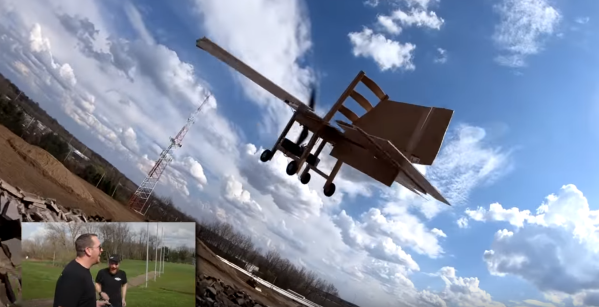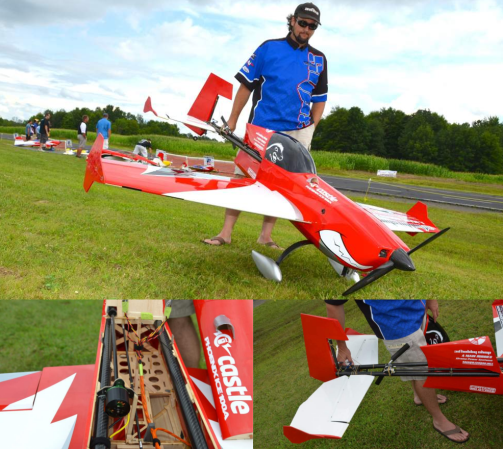The Flite Test crew is well known for putting some crazy flying contraptions together. They’ve outdone themselves this time with a flying IKEA chair. This build began with [Josh] issuing a challenge to [Stefan]. Take a standard IKEA ladderback chair and make it fly– in less than six hours. With such a tight schedule, measuring twice and cutting once was right out the window. This was a hackathon-style “throw it together and hope it works” build.
The chair was plenty sturdy, so it became the core of the fuselage. [Stefan] grabbed the wing from a previous plane and placed it on the seat of the chair. Two carbon fiber rods drilled into the seat frame formed a tail boom. The tailfeathers were built from Flite Test foam – paper coated foam-core board.
With the structure complete, [Stefan] and his team added servos for control, a beefy motor for power, and some big LiPo batteries. The batteries hung from the bottom of the chair to keep the center of gravity reasonable.
When the time came for the maiden flight, everyone was expecting a spectacular failure. The chair defied logic and leaped into the air. It flew stable enough for [Josh] to take his fingers off the sticks. The pure excitement of seeing a crazy build that works is on full display as the entire Flite Test crew literally jumps for joy. [Alex] even throws in a cartwheel. This is the kind of story we love to cover here at Hackaday – watching a completely nutty build come together and perform better than anyone expected.




 The firing assembly in the jet comes from a Nerf Rival Zeus Blaster, which is itself an interesting device. It uses two electric flywheels to launch soft foam balls – much like a pitching machine. With one flywheel running a little faster than the other, the trajectory can be modified. For example, a slight topspin gives the balls a longer and more stable flight path. Of course, foam balls slow down quickly once launched and at high speeds the aircraft can overtake the same projectiles it just fired, but it’s fun all the same.
The firing assembly in the jet comes from a Nerf Rival Zeus Blaster, which is itself an interesting device. It uses two electric flywheels to launch soft foam balls – much like a pitching machine. With one flywheel running a little faster than the other, the trajectory can be modified. For example, a slight topspin gives the balls a longer and more stable flight path. Of course, foam balls slow down quickly once launched and at high speeds the aircraft can overtake the same projectiles it just fired, but it’s fun all the same.










